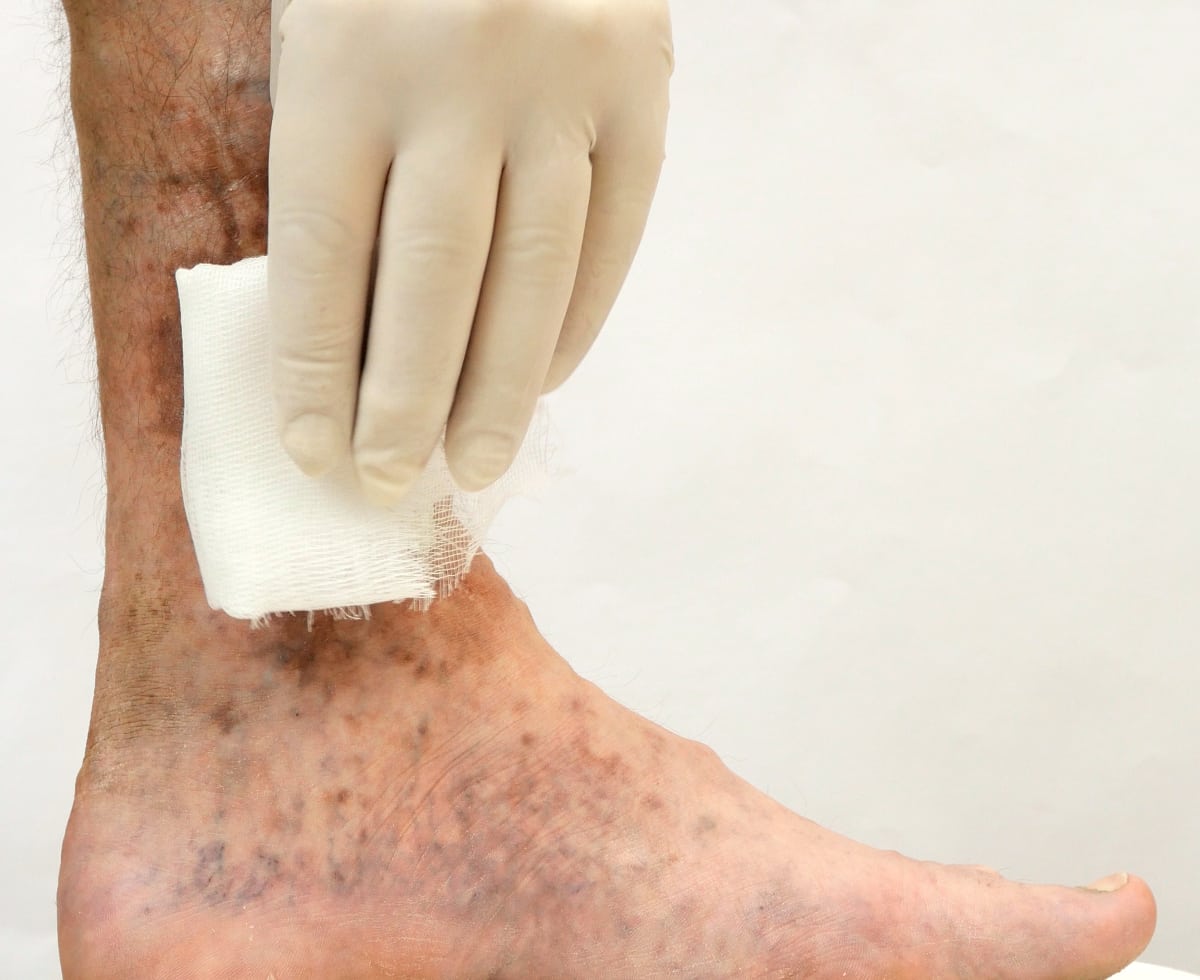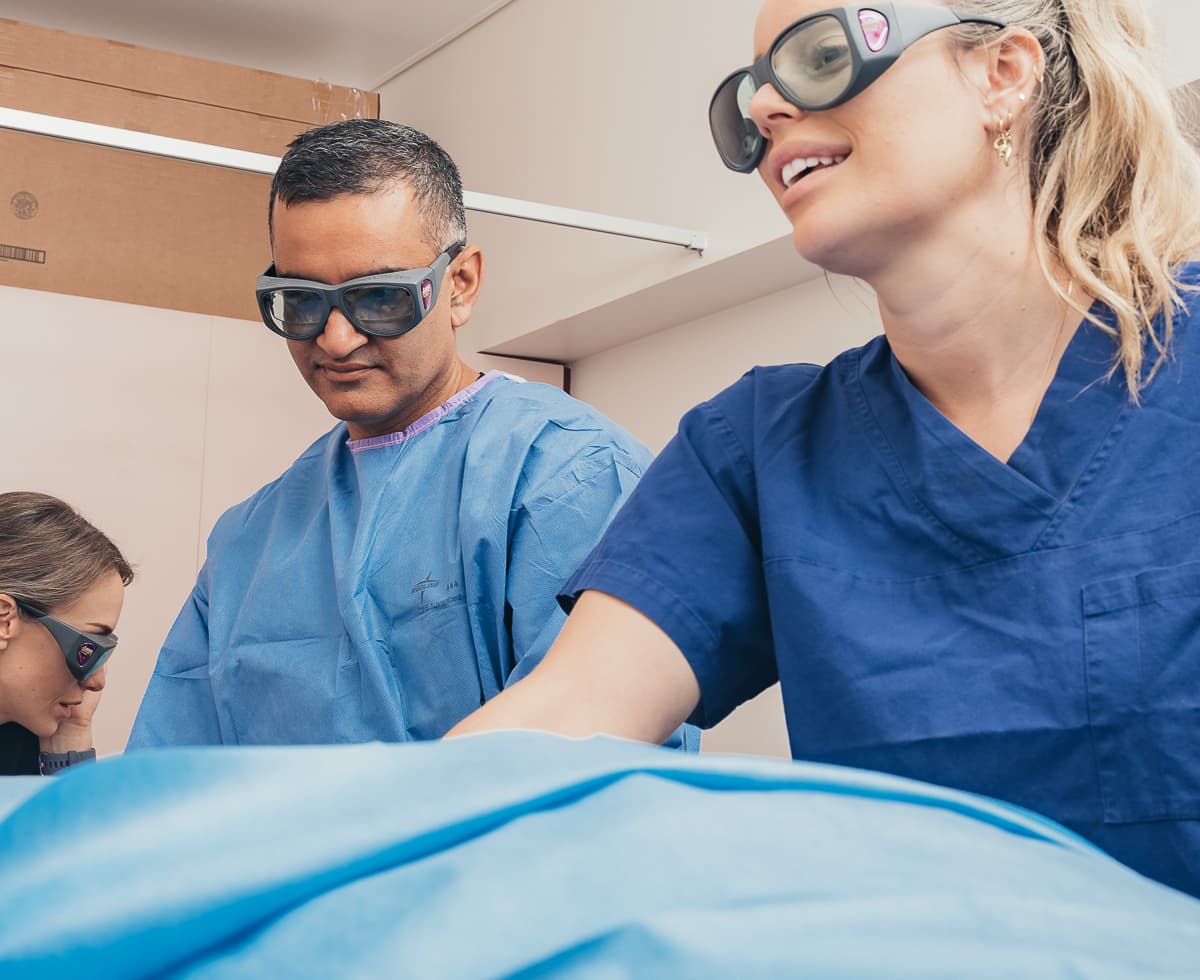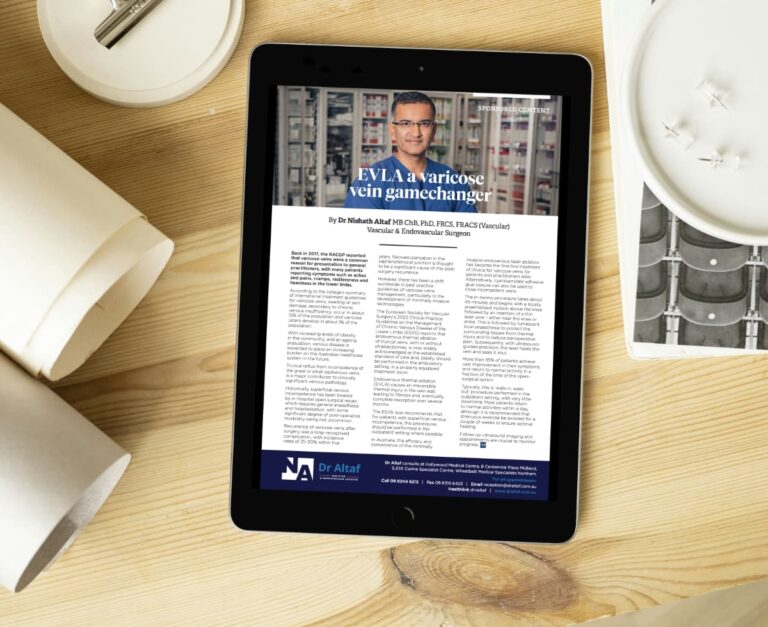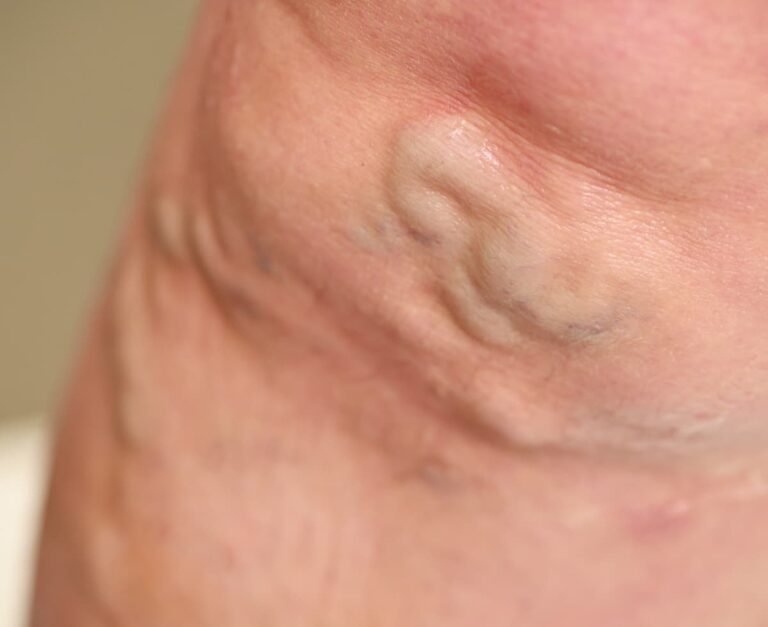Leg ulcers Perth
Understanding leg ulcers: causes, symptoms and treatment


Leg ulcer
What are leg ulcers?
Leg ulcers are common and they are characterised by breaks in the skin that fail to heal. Ulcers can occur anywhere on the body but in this article I will focus on leg ulcers.
Here’s an overview of symptoms:
- A wound in the lower leg
- The surrounding skin may be red or infected
- The wound may have a sloughy base and may drain pus
- There may be pain
- There may be varicose veins
Typically, leg ulcers are categorised into two categories; acute and chronic leg ulcers.
- Acute leg ulcers are often caused by injuries and are expected to show signs of healing within four weeks
- Chronic leg ulcers persist for more than four weeks and are often associated with underlying causes. Chronic leg ulcers affect 1% of the middle aged and elderly population. Usually there is a little injury on the leg and that results in an ulcer
What causes leg ulcers?
Leg ulcers can be caused by various factors, including:
Poor blood flow: When there is insufficient blood flowing to the legs, the affected tissues do not receive enough oxygen and nutrients necessary for proper wound healing. This inadequate blood supply can lead to the formation of what we call arterial ulcers which are characterised by tissue damage and non-healing wounds.
Venous insufficiency: Venous ulcers are primarily caused by malfunction of the valves in the vessels of the leg. When the valves fail to transport blood from the feet to the body and into the heart, blood reflux occurs resulting in pooling of blood around the ankle. This pooling damages the surrounding tissue resulting in ulceration.
Other reasons for venous insufficiency include vein blockage (iliac vein obstruction) or inability to use the calf muscles (to effectively pump the blood back to the heart).
Venous insufficiency tends to be the most common cause of chronic leg ulcers. When someone has varicose veins, a blockage in the veins or their calf muscles aren’t working properly, blood can start to gather around the ankles. This pooling of blood may damage the surrounding tissue resulting in leg ulcers.

Vascular and endovascular surgeon Perth
Diabetes: Diabetes can cause diabetic ulcers due to a combination of nerve damage or poor blood flow to the foot.
Skin cancer and other skin conditions may cause leg ulcers as well.
How are they diagnosed?

Vascular and endovascular surgeon Perth
These evaluations will help us determine the underlying factors contributing to the leg ulcer and guide the appropriate treatment approach.
Diagnostic tests may include:
- Examination of the wound and swab collection.
- Skin biopsy.
- Measurement of blood flow to and from the legs using techniques like ultrasound or CT scan.
Leg ulcer treatment Perth
What is the treatment for leg ulcers?
First-line treatment
The first-line treatment for leg ulcers aims to promote healing and address the underlying causes of the ulcer.
Medical treatment aims to improve the circulation of the leg. The type of treatment is determined by the underlying cause(s) of the ulcer, which we described earlier. If there is an infection present, and the ulcer or the skin around it becomes inflamed and red, antibiotics may be required.
Good wound care is essential! It is important to regularly cleanse the wound. Sometimes dead tissue may need to be removed from the wound surface (debridement). Specialised dressings may be used to protect the ulcer and promote healing.
Compression bandages help improve blood circulation, reduce swelling and promote healing (in 50% of patients with ulcers at 12 weeks).
Surgery
There are various types of surgery and which type is chosen depends on the underlying cause of the leg ulcer.
- Arterial ulcers: In cases where there is blockage in the arteries, further investigation may be needed through an angiogram, which helps visualise the blood vessels. Depending on the severity of the blockage, treatment options such as balloons or stents may be used to improve blood flow. In more complex situations, a bypass operation might be necessary to create an alternate pathway for blood circulation.
- Venous ulcers: While compression therapy can aid in wound healing, there is a possibility of the wound recurring. If varicose veins or venous incompetence are present, addressing these conditions becomes crucial for faster ulcer healing and reducing the chances of recurrence.
- Treatment options for varicose veins may involve procedures like laser ablation, glue ablation, or open surgery.
- In some cases, a vein stent might be necessary to assist with proper blood flow and maintain vein integrity. These interventions aim to improve the underlying venous condition, promoting effective healing and preventing the return of ulcers.
- Wound management: The wound may need debriding (removing dead tissue). In some cases, a skin graft may be recommended to facilitate the healing process of the wound.
How to prevent leg ulcers?
Self-care/prevention
To prevent and promote the healing of leg ulcers, it is important to manage the factors that contribute to their development. This may include:
- Quitting smoking
- Maintaining a healthy weight if overweight
- Engaging in regular walking and exercise
- Taking precautions to avoid injury
- Regularly examining your feet and legs for any signs of ulcers or abnormalities
- Keeping your feet and legs well-moisturised
- Wearing comfortable shoes that provide proper support
- Scheduling regular visits to a podiatrist, especially if you have diabetes
- Consulting with a vascular and endovascular surgeon to identify and address any underlying vein or arterial diseases that may be contributing to leg ulcers.
By actively managing these factors and seeking appropriate medical care, you can take proactive steps towards preventing leg ulcers or promoting their healing.
Conclusion
Though leg ulcers can be challenging, they are treatable. Prompt action, tailored treatment plans, and preventative measures, can improve outcomes and quality of life for those affected.
As a vascular surgeon, I am consulting in Nedlands, Carine and Midland. If you are in Perth and have concerns about leg ulcers and any vascular issue, don’t hesitate to contact our rooms.

About
Dr Altaf
As a vascular surgeon, I believe there is no one size fits all. This means appointments take as long until you fully understand the condition and are happy with my approach to get you the best treatment option.


